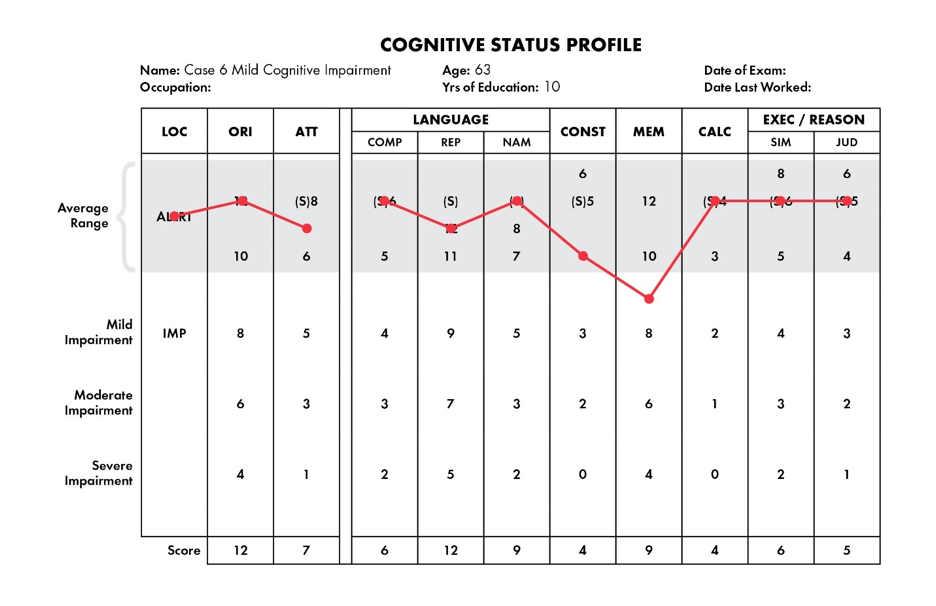Orientation:
A score of 12 out of 12 falls within the average range.
Attention:
A score of 7 out of 8 raises the question of an acquired impairment of attention. Problems with attention can be caused by one or more of the factors listed on page one of the Cognistat test booklet. Care should be taken in interpreting low scores in other ability areas when attention is impaired.
Language:
These Language scores fall within the average range.
Constructions:
A score of 4 out of 6 falls at the low end of the average range. Spatial-construction ability varies widely in the normal population, but this patient has mild difficulty with both the Memory and Construction subtests. This combination is worrisome as a possible early indication of Mild Cognitive Impairment (MCI). It is important to rule out treatable causes of MCI, to obtain a more comprehensive cognitive evaluation and to follow this patient closely in the future.
Memory:
A score of 9 out of 12 indicates mild memory impairment. It is important to carry out additional diagnostic procedures in order to rule out treatable causes of memory problems, to obtain a more comprehensive cognitive evaluation and to follow this patient closely in the future.".
Summary:
This patient has specific areas of impairment: Memory.
MCI Index:
The MCI Index is 3, which strongly suggests Mixed MCI (Mild Cognitive Impairment). This patient should be evaluated for treatable causes of cognitive decline and followed with serial testing. It is important to be alert to signs of deterioration in occupational and social functioning.
